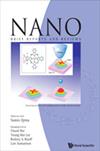The Network Structure Formation of Cu-CNTs Composites During Multi-Directional Forging Process and its Mechanical Properties
IF 1.1
4区 材料科学
Q4 MATERIALS SCIENCE, MULTIDISCIPLINARY
引用次数: 0
Abstract
Cu–[Formula: see text] CNTs composites ([Formula: see text], 1, 2, 3 vol.%) were successfully prepared using a combination of pre-treatment, powder metallurgy and multi-directional forging processes, which provides a solution for the industrial manufacture of the composites with network CNTs structures. During the multi-directional forging process, the CNTs in the composites were distributed in a network under the synergy of metal flow and copper particle squeeze. Compared with other structure modes, the network CNTs can effectively carry and transfer loads resulting in the promotion of mechanical properties (such as, the tensile strength approximately 1.5 times higher than those of composites with the same volume fraction without network structure). The composite with 2 vol.% CNTs had the highest elongation in this experiment (41%), which is about 5 times higher than the composites with other CNTs distribution patterns. At a low CNTs content level (1[Formula: see text]vol.%), a complete load transfer network cannot be formed, resulting in a relatively insufficient mechanical properties of the composites. As the content level is exceeded (3vol.%), it caused significant agglomeration of the CNTs, which lead to fracture in the agglomerated CNTs and elongation degradation of the composites.Cu-CNTs复合材料多向锻造过程中网络结构的形成及其力学性能
采用预处理、粉末冶金和多向锻造相结合的方法成功制备了Cu -[配方:见文]、1、2、3 vol.%的CNTs复合材料,为网状CNTs结构复合材料的工业化制造提供了解决方案。在多向锻造过程中,复合材料中的CNTs在金属流动和铜颗粒挤压的协同作用下呈网状分布。与其他结构模式相比,网状CNTs可以有效地承载和传递载荷,从而提高了复合材料的力学性能(如抗拉强度比相同体积分数的非网状复合材料高约1.5倍)。在本实验中,添加2 vol.% CNTs的复合材料伸长率最高(41%),是其他CNTs分布模式复合材料的5倍左右。当CNTs含量较低(1[公式:见文]vol.%)时,不能形成完整的载荷传递网络,导致复合材料的力学性能相对不足。当含量水平超过(3vol.%)时,CNTs会发生明显的团聚,导致团聚CNTs断裂,导致复合材料伸长率下降。
本文章由计算机程序翻译,如有差异,请以英文原文为准。
求助全文
约1分钟内获得全文
求助全文
来源期刊

Nano
工程技术-材料科学:综合
CiteScore
2.10
自引率
0.00%
发文量
95
审稿时长
1.6 months
期刊介绍:
NANO is an international peer-reviewed monthly journal for nanoscience and nanotechnology that presents forefront fundamental research and new emerging topics. It features timely scientific reports of new results and technical breakthroughs and also contains interesting review articles about recent hot issues.
NANO provides an ideal forum for presenting original reports of theoretical and experimental nanoscience and nanotechnology research. Research areas of interest include: nanomaterials including nano-related biomaterials, new phenomena and newly developed characterization tools, fabrication methods including by self-assembly, device applications, and numerical simulation, modeling, and theory. However, in light of the current stage development of nanoscience, manuscripts on numerical simulation, modeling, and/or theory only without experimental evidences are considered as not pertinent to the scope of NANO.
 求助内容:
求助内容: 应助结果提醒方式:
应助结果提醒方式:


